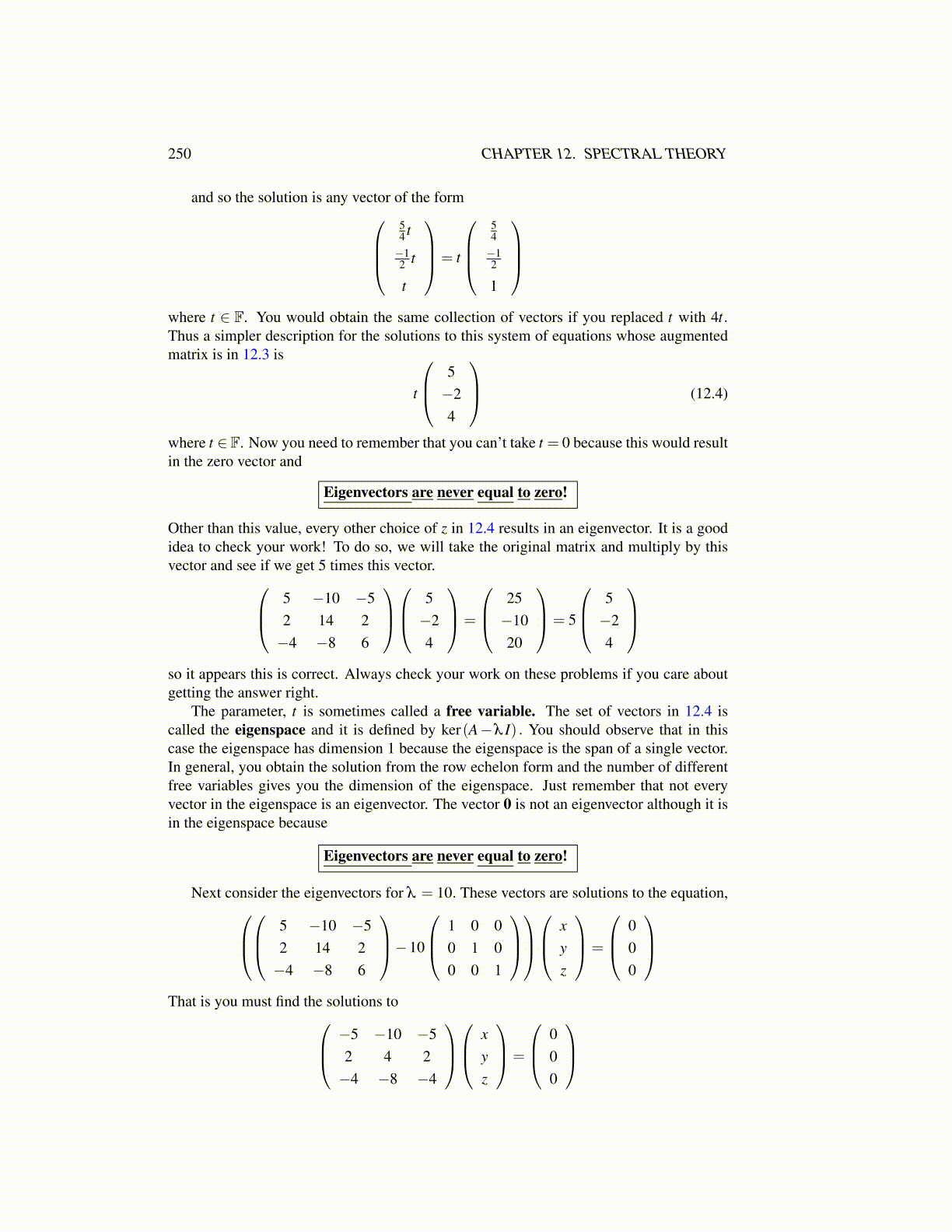
250 CHAPTER 12. SPECTRAL THEORY
and so the solution is any vector of the form54 t−12 t
t
= t
54−12
1
where t ∈ F. You would obtain the same collection of vectors if you replaced t with 4t.Thus a simpler description for the solutions to this system of equations whose augmentedmatrix is in 12.3 is
t
5−24
(12.4)
where t ∈ F. Now you need to remember that you can’t take t = 0 because this would resultin the zero vector and
Eigenvectors are never equal to zero!
Other than this value, every other choice of z in 12.4 results in an eigenvector. It is a goodidea to check your work! To do so, we will take the original matrix and multiply by thisvector and see if we get 5 times this vector. 5 −10 −5
2 14 2−4 −8 6
5−24
=
25−1020
= 5
5−24
so it appears this is correct. Always check your work on these problems if you care aboutgetting the answer right.
The parameter, t is sometimes called a free variable. The set of vectors in 12.4 iscalled the eigenspace and it is defined by ker(A−λ I) . You should observe that in thiscase the eigenspace has dimension 1 because the eigenspace is the span of a single vector.In general, you obtain the solution from the row echelon form and the number of differentfree variables gives you the dimension of the eigenspace. Just remember that not everyvector in the eigenspace is an eigenvector. The vector 0 is not an eigenvector although it isin the eigenspace because
Eigenvectors are never equal to zero!
Next consider the eigenvectors for λ = 10. These vectors are solutions to the equation, 5 −10 −5
2 14 2−4 −8 6
−10
1 0 00 1 00 0 1
x
yz
=
000
That is you must find the solutions to −5 −10 −5
2 4 2−4 −8 −4
x
yz
=
000